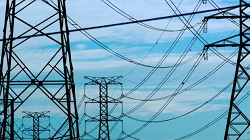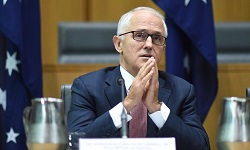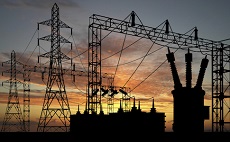
Tag Archives: National Electricity Market
Power tipping point
The Four Corners program Power Failure added to the sense of crisis around our power system, beginning with the breathless comment that there was almost a breakdown of civil order in South Australia when the lights went out in September. The program looked at the difficulties experienced when the power went off for three days. Recently in some places affected by Cyclone Debbie, crews couldn’t get in to start fixing for about double that time. I’ll come back to Four Corners via a series of articles published on the same day.
First, in the AFR tucked away on page 8, Mark Ludlow penned an article Renewables, EIS ‘make gas-fired power redundant’ (paper edition title). Ludlow interviewed Professor Frank Jotzow, director of the Centre for Climate Economics and Policy at ANU, who said gas had been overtaken by renewable energy, including battery storage, in the transition away from coal-fired power. We should skip gas and go straight to renewables with batteries. Continue reading Power tipping point
SA power plan: intervention, not going alone
Malcolm Turnbull and Josh Frydenberg have now added a second myth to the earlier one that South Australia had rushed madly and blindly into renewables without thought for the consequences. They say that South Australia is now “going it alone”. Unfortunately this meme was picked up in the media, so that Philip Clark on ABC Nightlife recently had SA “going it alone” as his topic of the day (most of the comment supported SA, but no-one, not a single one, had their facts right).
The fact is that the Australian Energy Market Operator (AEMO) runs the market, calls bids for supply on a 30-minute basis, and balances supply and consumption. That is what it has done every day for years, since 1 July 2009, and will continue to do so into the future. Except that 30-minute time-slots are bound to be reviewed in the Finkel report and may end up at five. The Australian Energy Market Commission is currently considering a request for such a change. Continue reading SA power plan: intervention, not going alone
What the biffo between Weatherill and Frydenberg really means
“Ten years of brutal, opportunistic politics has left this nation with no credible energy policy.”
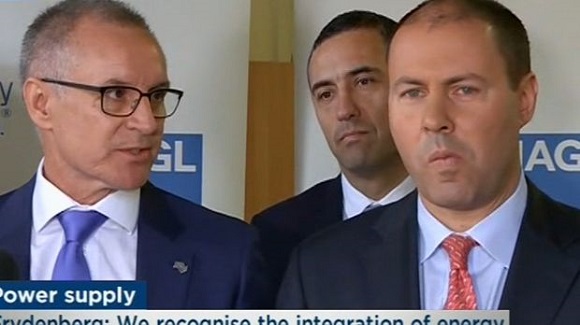
The money quote from Jay Weatherill’s outburst was this:
- “Josh Frydenberg was humiliated back in December. We were working with him to introduce an emissions intensity scheme. He knows that. It was well advanced. It was about to happen. Coal interests in the federal Coalition government basically cut him down before he even had a couple of hours explaining it.”
Continue reading What the biffo between Weatherill and Frydenberg really means
Retailers gouging electricity prices: Grattan
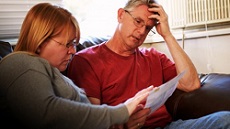 AGL, Origin and Energy Australia are gouging electricity retail prices, according to a report by The Grattan Institute titled Price shock: Is the retail electricity market failing consumers?.
AGL, Origin and Energy Australia are gouging electricity retail prices, according to a report by The Grattan Institute titled Price shock: Is the retail electricity market failing consumers?.
The report which focusses on Victoria finds that electricity retailers charge a margin double what other retailers make, for doing little other than marketing a service we are going to buy anyway, and sending out a bill. Continue reading Retailers gouging electricity prices: Grattan
Solutions to the energy crisis
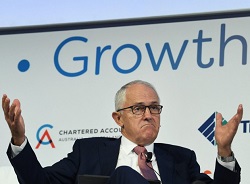 Malcolm Turnbull has now, for reasons best known to himself, elevated “energy crisis” to a “national security” issue. Ben Potter puts the situation well:
Malcolm Turnbull has now, for reasons best known to himself, elevated “energy crisis” to a “national security” issue. Ben Potter puts the situation well:
-
A decade of fighting over renewable energy, carbon prices and fossil fuels has left Australia with some of the world’s dirtiest and costliest energy – a bitter yield from historical abundance.
Three years ago, manufacturers began complaining they couldn’t get gas, and 18 months ago the South Australian grid started to wobble.
Now, electricity and gas prices across the eastern states are two to three times their levels only a couple of years ago.
Gas exporters overcommitted to foreign buyers; the federal government mismanaged renewable energy and the regulatory apparatus – and politicians responsible for it – are frozen in the headlights.
Climate clippings 198
1. LiquidPiston engine
The innovative LiquidPiston engine, mentioned by BilB, is targetting a global market worth $460 billion. It has a power to weight ratio more than ten times better than a regular engine:
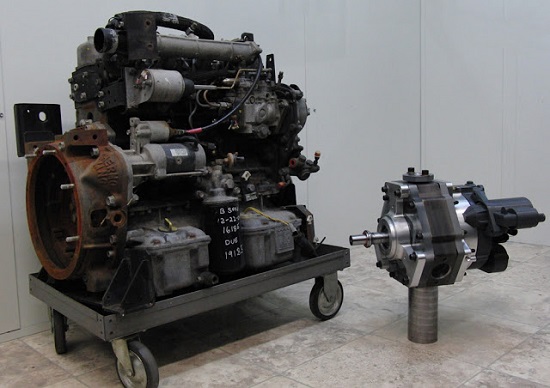
The big bruiser on the left puts out 35 HP, the one on the right 40 HP. Continue reading Climate clippings 198
What really happened in the SA February blackouts
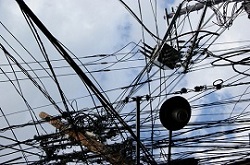 A number of reasons are being given for what was a relatively minor power blackout in South Australia, for example in Giles Parkinson’s excellent article, dud forecasts, lousy software, failing gas plants. However, the reason is actually more simple than that – no-one gets paid for despatchable standby power, only power actually used. South Australia needed standby despatchable power when record demand was forecast, and didn’t have it.
A number of reasons are being given for what was a relatively minor power blackout in South Australia, for example in Giles Parkinson’s excellent article, dud forecasts, lousy software, failing gas plants. However, the reason is actually more simple than that – no-one gets paid for despatchable standby power, only power actually used. South Australia needed standby despatchable power when record demand was forecast, and didn’t have it.
In the AFR Mark Ludlow tells us that the second unit at the Pelican Point gas-fired power station has not operated since April 2015, so it was effectively mothballed. When the need for extra power became obvious and the Australian Energy Market Operator (AEMO) approached Engie, the owners of Pelican Point, there was simply no time for a cold start. Continue reading What really happened in the SA February blackouts
Politicians lie, while corporates game the electricity system
I can’t make up my mind whether Malcolm Turnbull’s brains have fried, or whether he is just plain evil. I think of Godwin Grech, and think the former. My wife is convinced it’s the latter, and she’s usually right about people.
Anyway politics reached a new level of absurdity last week, as Scott Morrison brought a lump of coal into the parliament, which ended up between a crazed Barnaby Joyce’s legs, while in Question Time Turnbull’s answer to every question about the omnibus bill to change social security entitlements (and save a heap of cash) was to rant about Bill Shorten, blackouts and dreaded renewable energy in South Australia.
All the while, fossil fuel generators are gaming the system, to extract more from electricity consumers, while the market regulator ends up splitting the profits.
Two politicians from South Australia, Premier Jay Weatherill and Energy Minister Tom Koutsantonis, are very angry, and they’ve had enough. Continue reading Politicians lie, while corporates game the electricity system
Closing down coal
Frank Jotzo recently pointed out that if we are to meet our Paris commitments of keeping global temperature rise below 2C we will need to close about one coal-fired power station every year. I believe we have 24.
He was giving evidence to a Senate inquiry into the Retirement of coal fired power stations set up by the Greens and Labor, chaired by Larissa Waters and due to report on 29 March 2017. If you follow the links there is already an Interim Report and 133 submissions available for our perusal. Continue reading Closing down coal
Turnbull and energy policy broken
A bit further down I’m going to look at what Tristan Edis has to say about electricity pricing, but first what the whole affair is doing to Turnbull.
Mark Di Stefano at Buzzfeed has a detailed account of Turnbull’s year in 2016: The Year That Broke Malcolm Turnbull, and the pictures follow the story. Turnbull starts out as a confident leader, full of hope and bright ideas, and ends as just another politician that people don’t like very much. And there is rising anger about him within the conservatives of his own party.
Michelle Grattan’s piece in Has Turnbull’s credibility deficit reached a point of no return? leads with an image that says it all: Continue reading Turnbull and energy policy broken
Energy and climate policy in disarray
On Monday this week energy and climate minister Josh Frydenberg suggested that an emissions intensity trading scheme for the electricity industry to help manage the transition to lower-emissions energy sources might be considered in the context of the Coalition’s reconsideration of climate change policy. A mere 33 hours later Turnbull killed off the option. It looked too much like a carbon tax, and the extreme right of the coalition gave it the thumbs down.
Sean Kelly at The Monthly ripped in:
- And so Turnbull is left looking like a coward. Frydenberg floated looking at something – not actually doing it, just considering it. The right said no thank you. Turnbull ruled it out. We’ve seen this show so many times now.
And this is the problem – not that Turnbull looks like a coward. The conclusion is hard to avoid: Turnbull looks like a coward because he is a coward. Continue reading Energy and climate policy in disarray

